
|
To protect native plants and local genetic diversity |
|
RESEARCH GROUP on conservation of polylepis forests |


|
Polylepis incana (Hcda. Inga Alto) |
|
About Us |
|
The populations of the Genus Polylepis in Ecuador are decreasing at alarming rate. In the last two decades, their distribution has been shrunk due to anthropogenic forces. The Polylepis forests has a fundamental ecological role in the highlands, they act as sponge to keep water in these complex ecosystems. They are characterized by their high biodiversity, large numbers of endemic species and isolated distribution throughout the Andes as a result of large-scale destruction. Polylepis forms patches distinct from other woodland habitats, right up to the upper edge of the Pacific slope, near the glaciers.
Fragmentation of paramo forest, because of harvesting for wood products or agricultural expansion, has been changing the original landscape to a mosaic of remnant habitats surrounded by unfavorable areas. In many areas of Ecuador, the natural forest cover has been eliminated and woody patches of various kinds including, Polylepis and Gynoxis, are the only remaining habitat for forest flora and fauna. In this context, the Biotechnology Lab (ESPE) had started some studies from 2004 related to genetic, environmental microbiology and tissue culture of this genus in Ecuador. Our objective is to obtain a basic knowledge about some aspects of the Polylepis natural history in order to create a model of technical rehabilitation of these forests in the Ecuadorian Paramos.
In addition, we had open our scope to other key species (Cedrela and Pseudalopex culpaeus) from the Andes to understand their role in the High Andean Ecosystems. |

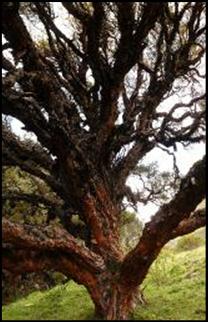
|
OUR TEAM
RESEARCHER Claudia Segovia-Salcedo MSc. PhD candidate University of Florida Lab of Molecular Systematics and Evolutionary Genetics FLMNH
Research Interest Systematics, phylogenetic relationships, biogeography of Polylepis (Rosaceae); Tropical plants; conservation biology and stewardship of rare species and natural areas. Science Education, mentoring and Women in Science.
Publications
Segovia-Salcedo. M.C. 2011. En Busca del Cedro. Revista ESPECTATIVA. Volumen 6 Diciembre 2011. pp 50. http://www3.espe.edu.ec/espe-revistas/index2.php?option=com_flippingbook&view=book&id=22
Segovia-Salcedo M.C.2011. Los bosques de Polylepis estan amenazados. EDucaccion. El Comercio Abril 13, 2011
Segovia-Salcedo, M.C. 2011. Los riesgos de reforestacion de los paramos con especies exoticas: el caso de Polylepis racemosa. Propuestas Andinas 4(1) Septiembre 2011. http://www.condesan.org/ppa/node/3427
Segovia-Salcedo, M. C. Salinas-Aponte, N. Soltis, D and P. Soltis 2011. Creacion de una biblioteca genomica para el aislamiento de microsatelites específicos para el genero andino Polylepis Memorias del VII CONGRESO DE CIENCIA Y TECNOLOGIA. Sangolqui, Ecuador.
Quijia-Lamina, P. Segovia-Salcedo, C. Jadán, M & K. Proano.2010. Estandarizacion de la metodologia para el conteo cromosomico en Polylepis incana y P. pauta. Revista Ecuatoriana de Medicina y Ciencias Biológicas VIL 1-2 :33-49
Quijia-Lamina, P. Jadan, M Proano. K. & C. Segovia-Salcedo. 2010.Estudio Citogenetica de las especies del genero Polylepis: P. incana y P. racemosa en el Ecuador.Memorias del VI CONGRESO DE CIENCIA Y TECNOLOGIA. Quito, Ecuador.
Jaramillo, P. Proano K . Jadan M. y C. Segovia-Salcedo. 2008. Medios de induccion, control de oxidacion y contaminacion en el cultivo in vitro de Polylepis microphylla. Revista ESPE Ciencia y Tecnologia. 1(1): 47-60.
Ochoa, V. Jimenez, P. Proano K and C. Segovia-Salcedo. 2008. Genética Poblacional de Polylepis pauta y P. incana en el Paramo de Papallacta. Revista ESPE Ciencia y Tecnologia. 1(1): 71-79.
Monica Jadan MSc COORDINATOR Research Interest Micropropagation of native and endemic species, culture tissue, secondary metabolist, protoplast fusion.
Maria Augusta Chavez DVM. MSc. Research Interest Molecular detection of parasites in mammals.
ELECTRONIC MICROSCOPY Alex Debut PhD. Research Interest Application of microscopic techniques to systematic and conservation.
RESEARCH ASSISTANT Paulina Quijia Biotech Engineering-MSc. Student SENESCYT Fellow University of Florida
Research Interest Plant Cytogenetics . Native Plant Conservation
RESEARCH ASSISTANT Natalia Salinas Biotech Engineering. MSc. Student Fulbright Fellow Oregon State University
Research Interest Population Genetics. Plant Conservation
UNDERGRAD STUDENTS Jose Montalvo Research Interest Cytogenetics Polylepis pauta and P. sericea
Francisco Zurita Research Interest Cytogenetics Polylepis incana and P. racemosa
Rosa Elena Andrade Research Interest Population genetics Polylepis pauta and P. sericea
Alejandra Llerena Research Interest Phylogeography of Cedrela
Milton Quinga Research Interest Molecular Ecology of Andean Fox
OUTSTANDING SOPHOMORE UNDERGRADS Lorena Rovere Vladimir Enriquez
|
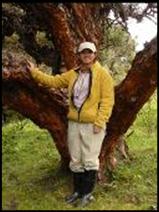
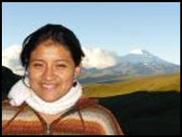
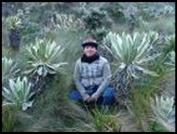
|
If you have comments or suggestions, email me at maclaudiasegovia@yahoo.com Updated 6/07/2012 |
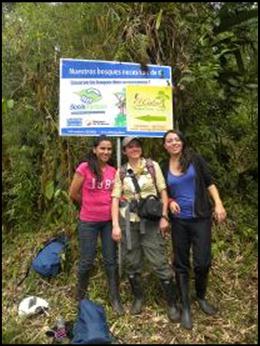
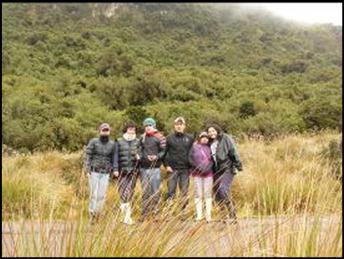
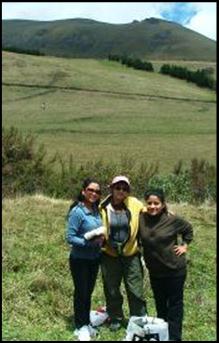
|
GROUP POLYLEPIS-ANDEAN FOX |
|
GROUP SPANISH-CEDAR |
|
GROUP POLYLEPIS |
